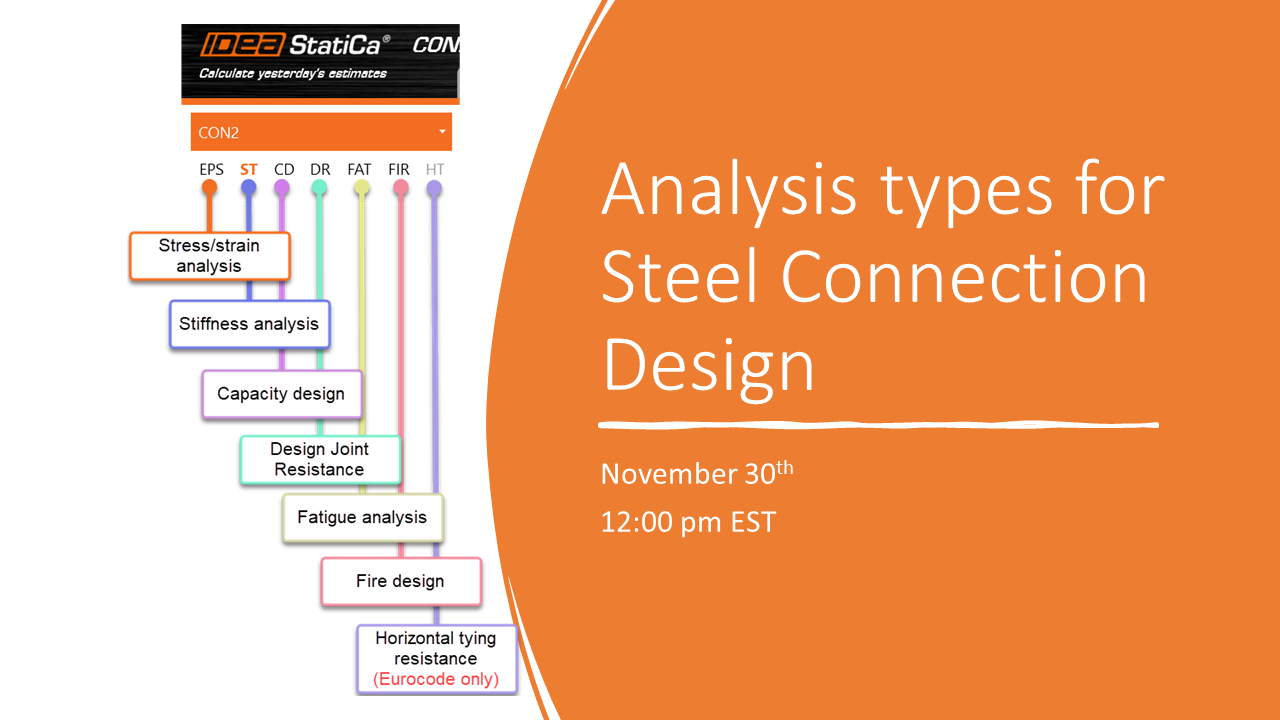Webinar
Analysis Types for Steel Connection Design
-
2022-11-30T17:00:00.0000000Z(en votre temps local, format 24 heures)
Date de webinaire:
Rejoignez le webinaire pour savoir plus de
Different types of analysis and how to answer these questions:
- What are the buckling factors for this connection?
- Is this moment connection - Semi-rigid or Rigid?
- Is my hinge in the correct location for seismic connections?
- What is the maximum force that a connection can handle?
- How will fire temperatures affect your design?
Lecteurs

Andrea Castelo
Product Engineer
IDEA StatiCa US
IDEA StatiCa US

David Eckrote
Director
IDEA StatiCa US
IDEA StatiCa US

Yann Gueguen
Regional Sales Engineer
IDEA StatiCa US
IDEA StatiCa US
You probably have used IDEA StatiCa for stress and strain analysis, but did you know that IDEA StatiCa can do 5 more types of analysis per AISC? Join us in this webinar to learn some basics about each of these analysis types including reviewing results.
Webinar content
Join this webinar to know how to use all the types of structural analysis that IDEA StatiCa can handle for steel connection design, we will go through:
- Buckling analysis: confirm the safety of using plastic analysis. The result of linear buckling analysis is buckling factor αcr corresponding to the buckling mode shape.
- Stiffness analysis: rotational and axial stiffness is calculated and these values are used to determine whether a moment connection is semi-rigid or rigid
- Capacity design: used for high seismic to determine hinge location in your dissipative element
- Design resistance: determine capacity of connection as a percentage of your applied load (great for checking existing connections)
- Fatigue analysis: determine normal and shear stress range between two load cases
- Fire design: load-deformation curves of all elements are modified based on the set temperature and report stress strain results
Explaining the inputs, results, when the selected analysis is useful, examples and user cases.
